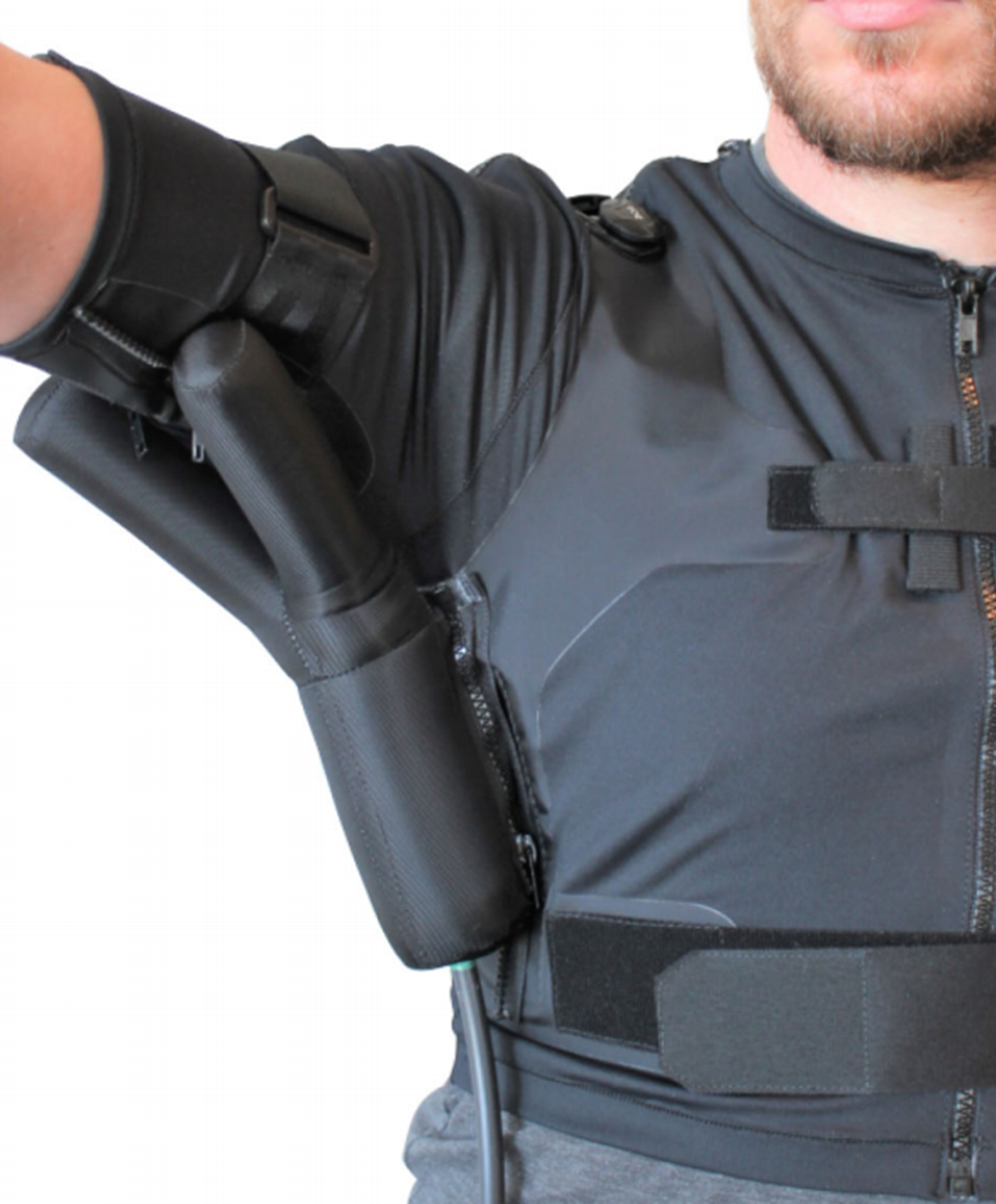Soft Robotic Shoulder Exosuits, Harvard University
In my Ph.D. research, I am seeking to better understanding the underlying mechanics behind a class of wearable shoulder-assistance soft robots developed previously at Harvard University. These systems utilize an inflatable textile soft actuator anchored under the arm through a custom-made shirt to apply assistance to the shoulder joint. In my work, I am developing new techniques for the characterization, modeling, and optimization of these systems, specifically considering their complex physical interactions with the human body. In many ways, this research topic perfectly combines the expertise of my two labs—i.e., the development of highly effective wearable robots in Prof. Conor Walsh’s Harvard Biodesign Lab and the study of complex deformable structural mechanics in Prof. Katia Bertoldi’s Bertoldi Group.
The first branch of my research focused on developing techniques to characterize the torque exerted by these devices directly in-situ on the human body. While many groups have studied soft actuators in isolation on the benchtop, little effort has been devoted to studying them under representative on-body boundary conditions. By developing a new experimental procedure to measure these loads, we were able to demonstrate significant differences in the device behavior between the benchtop and the on-body setting, motivating the need to consider the mechanical interactions with the body when evaluating device performance.
The other focus of my research has been developing models to describe the behavior of these systems. This includes both reduced-order shirt models that leverage empirical actuator data and also numerical finite-element simulations to capture the full complexity of the actuator deformation. In the final portion of my Ph.D., I hope to leverage these models for the optimization of the device design, allowing us to modify the actuator geometry to maximize the on-body performance of these robots.
